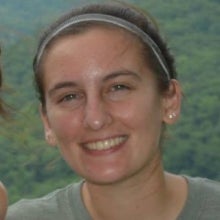Eight students will be presenting the summer work at the Ocean Sciences Meeting in March 2022!
Max Spehlmann, Lake Forest College
Class Year:
2016Mentor:
Greg Silsbe, Ph.D.Project Title:
Improving Remotely Sensed Chlorophyll Concentration Estimates Using Hyperspectral Radiometers in the Chesapeake Bay
Abstract:
Throughout the last two centuries a variety of anthropogenic forces have drastically altered the Chesapeake Bay ecosystem. Because of their correlation to water quality, phytoplankton populations are useful gauges of restoration efforts and the changing biogeochemical properties of the Bay. Estuaries are dynamic environments, and traditional, in situ sampling lacks the spatiotemporal resolution necessary to effectively monitor water quality in general and phytoplankton populations in particular. In the past two decades, satellite technology has allowed for more resolved water quality measurements. However, extant ocean-observing satellites are best suited to the open ocean. In coastal and estuarine waters, high turbidity and land interference severely diminish the utility of satellite data. Hyperspectral instruments measure ocean color with much greater spectral resolution than the multispectral instruments currently deployed on ocean-observing satellites. Increased spectral resolution allows for better approximation of phytoplankton concentrations in optically complex waters. This research seeks to test optical inversion algorithms designed for the Chesapeake Bay. By pairing in situ measurements of chlorophyll with electromagnetic spectrum measurements, we determined the most accurate algorithms for use in the Chesapeake Bay. These algorithms can then be employed in future remote sensing studies to yield accurate chlorophyll measurements in fine temporal, and spatial time scales.
Location:
Horn Point LaboratoryREU Update
Hydrologic Technician at Department of InteriorPresentations:
Spehlman, M.* and G. Silsbe. 2017. Improving remotely sensed chlorophyll concentration estimates using hyperspectral radiometers in the Chesapeake Bay . ASLO Aquatic Sciences Meeting, Honolulu, Hawaii .





